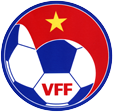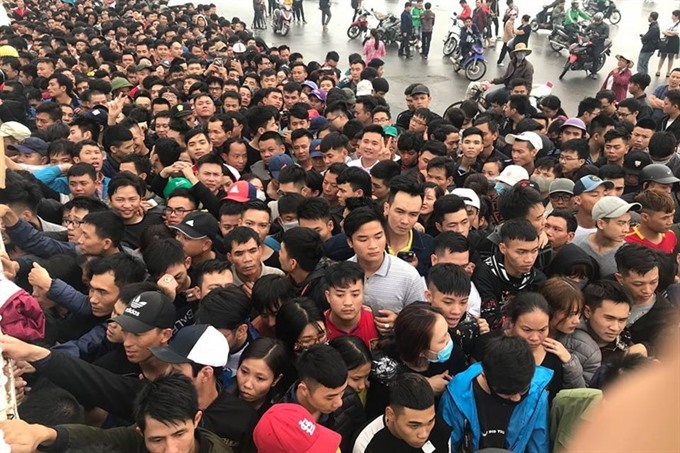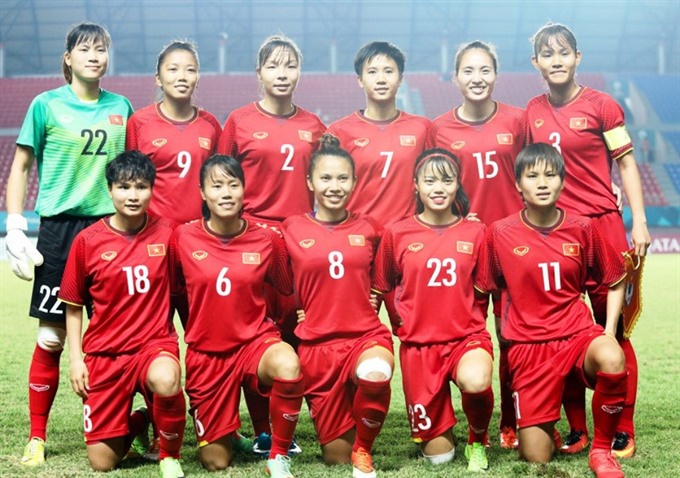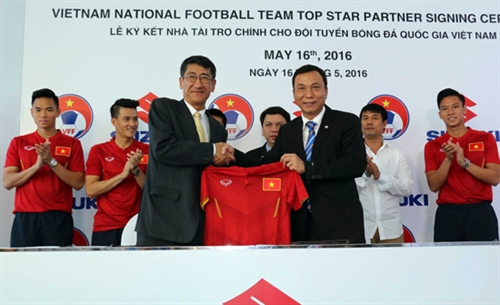GOING FOR GOAL
FIFA"s successful Goal development programme is now entering its third phase and has produced some very pleasing results so far.
FIFA”s successful Goal development programme is now entering its third phase and has produced some very pleasing results so far.
Nevertheless, there is still plenty to do.
Oligarchs can spend hundred of millions or even billions of dollars, buying top football clubs and assembling star-studded squads of players.
These days, thanks to clubs, benefactors and businesses, modern stadiums seem to be springing out of the ground like mushrooms in some countries.
Some football associations own headquarters comprising of numerous offices, meeting rooms, seminar facilities along with impressive training centres for their national teams, state-of-the-art fitness suites and the latest medical and therapeutic equipment.
The all-round pampering of the players does not stop there either.
They are housed in top-class hotels, fed exquisite meals and can play pool, foosball and computer games or surf the internet free of charge to their heart”s content.
But not every association can offer its players such excellent comprehensive care as France, Argentina or Japan .
“The Goal programme is a prime example of solidarity in action,” said Joseph S. Blatter, FIFA president.
For many years, countless associations did not even have their own headquarters and could only dream of having playable natural turf pitches, suitable sanitary facilities or rooms for FIFA courses and seminars until 1999, at least.
When the 52nd FIFA Congress took place in Los Angeles that year, FIFA President Joseph S. Blatter introduced the Goal programme, which was to support needy associations by building their own headquarters, laying natural and artificial pitches, constructing training and education centres or other facilities that they require.
Using the Goal programme, Blatter wanted to provide every member association with its own “house of football” by the end of 2006 and he has kept his word.
The FIFA president has been able to turn this notion into reality in record time thanks in no small part to the associations, sponsors and government authorities who have provided valuable support for the individual projects in the form of financial contributions, land donations, tax exemptions and technical advice.
While not all of the projects have yet been completed (although more than 150 were ready by the end of 2006), FIFA is already setting its sights on new targets.
Ninety per cent of FIFA”s members (187 associations) have benefited from the Goalprogramme – 103 of them have also received a second project and two a third.
In all, Goal has so far subsidized 292 projects with total funding to the tune of CHF 200 million (approximately USD 160 million).
The introduction of the Goal programme and the Financial Assistance Programme (FAP) in 1999, together with the setting-up of 12 development offices around the world marked the start of a new era in the world governing body”s development activities.
It represented a revolutionary step in terms of both substance and its form of financing.
“We can look back with pride on what we have achieved so far,” said Mohamed Hammam, chairman of the Goal Bureau.
After FIFA had invested a total of USD 32 million in various development programmes between 1975 and 1999, the organization decided to make a clear statement of solidarity within the football family by allocating a USD 874 million budget to a range of innovative initiatives during the 1999-2006 period.
In other words, the spending was than 30 times more than in the previous quarter of a century.
With this decision, FIFA enhanced its pioneering position in the field of sports development.
It was no surprise that it took a certain amount of time to set up and run the programme effectively.
At the start, there were some delays in the launch of the projects and of course lessons also had to be learnt from the mistakes that were made.
However, as soon as the first “houses of football” became operational, even the biggest skeptics were won over.
It is hardly surprising that the 2002 FIFA Congress in Seoul unanimously voted to continue the FIFA President”s visionary programme.
Goal was originally intended to benefit around 100 member associations with special needs, but it quickly became clear that more associations required support and some countries had greater requirements than originally anticipated.
The process of turning the vision into reality therefore had to be planned in various stages and over numerous projects.
The conscious decision to keep FIFA”s contribution to each project to the modest amount of USD 400,000 ensured that many associations could receive help.
At the same time, the amount FIFA provides encourages member associations and the authorities to take the initiative and seek co-funding.
This cooperation has led to a significant overall improvement in relations between associations and governments.
“House of Football” infrastructure projects also help to modernize associations and increase their professionalism.
Extending much further than just planning construction projects, FIFA”s range of support options has been brought together in the GoalPLUS scheme.
GoalPLUS is intended to accompany Goal projects and associations on an on-going basis and comprises a range of measures for professionalising football administration (statutes revision, courses, planning, youth development etc) and getting the most out of association headquarters, technical centres and pitches.
The second phase of Goal between 2003 and 2006 focused on consolidation, expansion and bringing together various development programmes including the FAP and FIFA”s range of courses and seminars, with all of them being centrally managed by the world governing body”s Development Division.
The various initiatives are integrated into national development plans that take account regional circumstances.
The FAP was totally revised and the course and seminar catalogue restructured at the same time.
This process of integration has now been completed successfully and the current catalogue of courses and seminars is so diverse that the member associations have access to support tailored to their needs in all areas.
At the same time, transparency in the use of funds is also ensured.
Investment in infrastructure projects is indispensable for the ongoing development and spread of the game of football.
Some member associations, such as those in India and the People”s Republic of China, have such an overwhelming need for facilities that there is an argument for the Goal programme to continue for decades to come.
Meanwhile, some of the association headquarters that were constructed at the beginning of theGoal programme already need further investment for extension or to replace equipment.
Moreover, in view of the ever-increasing football standards and booming demands, floodlights and artificial turf pitches have now become a customary part of any training centre.
In addition, regional associations need to be provided with their own headquarters and linked up with the national body.
Associations are also starting to support football at club, school and grassroots level in various ways including the construction of mini-pitches.
Those associations that were unable to fully realize their “house of football” by the end of 2006 will also receive further support in Goal“s third phase.
Further enhancements to the programme are planned in the coming years and they will smoothly be implemented with aid from the existing development offices and a global network of instructors and specialists.
At the heart of these plans are the following:
- Regional programmes (for example, Win in Africa with Africa)
- Organisation of football at member association level by setting up professional and amateur leagues, giving support to clubs and promoting grassroots football at clubs and school level.
- Introduction of development schemes for women”s football, futsal, beach football and refereeing and their integration into existing development programmes.
This will help to enhance and increase the flexibility of FIFA”s offering, ensuring that no matter where the member associations are feeling the pinch, FIFA will have the right solution.
Confederations and member associations that have their own development programmes also offer FIFA assistance.
However ultimately, the success of development work is dependent entirely on the association concerned.
Only if an association is run professionally and the projects financed by FIFA and the confederations are underpinned by a business plan can sustainable development be achieved.
COURTESY OF FIFA MAGAZINE, OFFICIAL PUBLICATION








